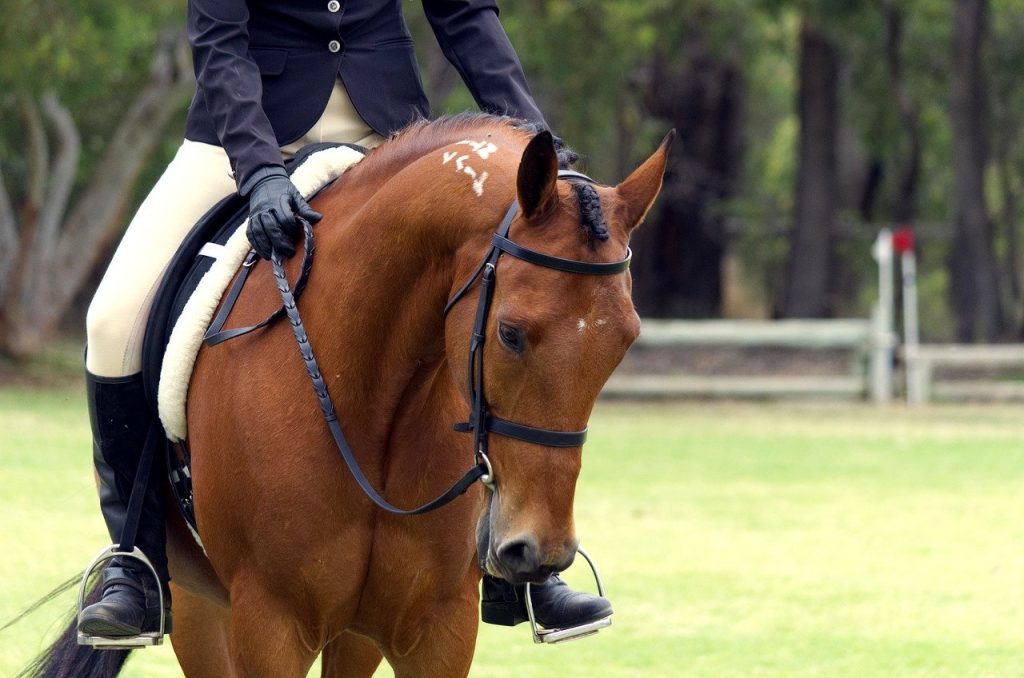The world of equestrianism is vast and fascinating, and one essential piece of equipment that every rider should know about is the horse bridle. This article aims to explore the many uses of a horse bridle, shedding light on this invaluable tool. What exactly does a bridle do, and why is it so important?
A horse bridle is a crucial part of the tack used in horse riding. It comprises various components that contribute to controlling and communicating with the horse. Riders of all skill levels, from beginners to seasoned equestrians, depend on this essential tool for successful and safe riding experiences.

The Components of a Horse Bridle
The Headpiece
The headpiece is one of the main parts of the bridle. It sits behind the horse’s ears and helps to keep the bridle in the correct position on the horse’s head.
The Browband
The browband runs across the forehead of the horse, preventing the bridle from sliding back and ensuring a snug fit.
The Cheekpieces
Cheekpieces connect the headpiece to the bit, playing a crucial role in transmitting the rider’s signals to the horse.
The Bit
The bit rests in the horse’s mouth and is pivotal for communication between the horse and rider. It helps direct the horse’s movement.
The Reins
The reins are connected to the bit and are used by the rider to steer and stop the horse.

Types of Horse Bridles
Snaffle Bridle
The most common type of bridle, suitable for various riding disciplines, providing direct rein pressure to the horse’s mouth.
Double Bridle
Used mainly in advanced dressage, this bridle uses two bits and four reins for refined communication.
Western Bridle
Commonly used in Western riding, often without a noseband for different types of control.

How to Choose the Right Bridle
Consider the Discipline
Your riding style and discipline greatly influence the type of bridle you should choose.
Material
Bridles come in various materials like leather and synthetic options. Leather is traditional and durable, while synthetic ones are easy to maintain.
Horse’s Comfort
A properly fitted bridle ensures your horse’s comfort, preventing discomfort and potential injuries.

How to Fit a Horse Bridle
Step-by-Step Guide
Properly fitting a bridle involves placing it correctly over the horse’s head and adjusting all straps to ensure comfort.
Maintaining Your Horse Bridle
Regular Cleaning
Keeping your bridle clean extends its life and ensures it remains comfortable for your horse. [Learn how to clean your western saddle](https://prohorseworld.com/how-to-clean-a-western-saddle/)
Inspect for Wear and Tear
Regularly check all parts of the bridle for signs of wear and tear, replacing any damaged components promptly.
The History of the Horse Bridle
Ancient Times
Bridles have been used for thousands of years, with evidence dating back to early civilizations.
Evolution Over the Centuries
The design and materials of bridles have evolved, influenced by advancements in riding techniques and materials.
The Importance of a Horse Bridle
Communication Tool
A bridle is essential in transmitting the rider’s commands, ensuring effective communication between horse and rider.
Safety
A well-fitted bridle enhances safety by providing better control over the horse during riding.
Common Myths About Horse Bridles
Bridles Are Uncomfortable for Horses
With proper fitting and regular maintenance, bridles can be comfortable for horses.
All Bridles Are the Same
Different types of bridles offer varying levels of control and communication.
FAQ
What is the purpose of a horse bridle?
A horse bridle is used to control and communicate with the horse, ensuring effective riding and safety.
How can I maintain a horse bridle?
Regular cleaning and inspection for wear is crucial for maintaining a horse bridle.
How do I choose the right horse bridle?
Choose based on riding discipline, material, and ensuring comfort for the horse.
Seasoning cast iron skillet is essential.
As an Amazon Associate, I earn from qualifying purchases.